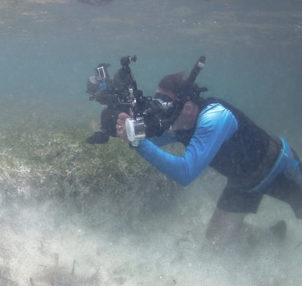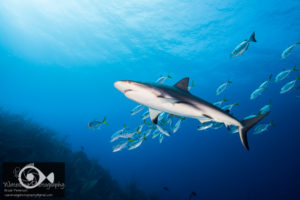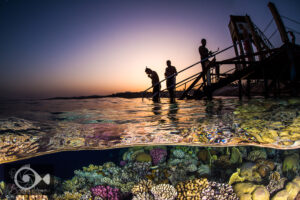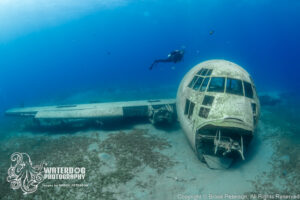When it comes to wildlife photography, Rick Beldegreen is the wild cat’s meow! His captivating images have mesmerized viewers both above and below the water line. He seems to have a special relationship with animals, as by his own admission he seems to prefer being around animals more than people. Perhaps that explains why he became a veterinarian and served as the Supervisor of Animal Care for Sea World in Orlando.

Originally from New York, Rick now lives in North Carolina where he has lived for many years. He has always enjoyed wildlife photography and more recently began testing the waters with a Nikon D500 in Nauticam housing. He uses Sea and Sea YS-D2 strobes and either a Tokina 10-17mm lens or a Nikon 60mm.

Rick learned to dive and make underwater photographs at the same time. He was a frustrated snorkeler, being able to see all kinds of great things to photograph from the surface, but unable to get close enough to adequately photograph them. His love for photography led him to become a certified diver. Like many photographers, diving is a means to an end; allowing him to photograph all the great critters that hang out below the surface.

Being a self-taught life-long wildlife photographer gave Rick the experience he needed to create underwater photographs. His education consists mostly of workshops and on-line instruction combined with experience. It seems to have served him well as he has received numerous awards for his photography, most notably an Honorable Mention in the 2019 African Wildlife category of Nature’s Best. Other awards include a Judges Choice award in NANPA for a whale shark photo and a Best of Show at CNPA, chosen by Art Wolfe, for an underwater crocodile from Mexico.
Rick enjoys both wide angle and macro photography but prefers to shoot wide angle only for large animals. Wrecks and reefs aren’t his thing. He also prefers photographing animals with easily discernible eyes. He likes the “connection” of eye contact with his subjects. Although he finds nudibranchs interesting and beautiful for instance, he doesn’t spend a lot of time photographing them. He would prefer to spend his time with a shrimp, crab, turtle or shark and will spend his whole dive with the subject if possible. Since photography is his main objective, he would prefer to dive in warm water with little current and great visibility, ideal for photography, but not necessarily ideal for diving.
One technique that Rick is quite skilled at is using motion blur in his images. He likes to experiment with various shutter speeds and rear sync flash. In his kit, he has a 45 degree angle viewfinder that is one of his favorite pieces of equipment. He finds that the viewfinder makes it much easier to position himself when photographing close-up.



Because Rick learned to dive and photograph at the same time, he has some advice for novice photographers and that is to become a better diver. He also recommends starting out in a pool with a nice deep end to begin getting comfortable with using an underwater camera. It is a low stress environment in which you can put maximum attention towards getting comfortable with handling an underwater camera.

Photographing whale sharks was something that Rick found challenging. “Although an amazing experience, it was difficult to get a good creative image of a whale shark. They are so big and rarely still, so getting into position with the right light was a real challenge.” Other big animals that he has successfully made images of include the American saltwater crocodiles in Mexico. In his own words, “…while photographing crocs in Banco Chinchorro, Mexico, I had the unique experience of being “run over” by a croc. And since I had a GoPro mounted on my camera housing, I captured all the action. Two crocs got involved in a bit of a fight and I was furiously photographing the action in front of me. The less dominant croc was looking for a way to escape and in a “flash” darted between me and the crocodile handler, a space of about two feet. It actually collided with my shoulder as it swam past. My GoPro caught the action. In a “split second” the croc went from in front of me to behind me. The frame filling video of a scaley croc leg colliding with my shoulder made for a good story.”
You can see more of Rick Beldegreen’s images at Website: www.wildimage.photography
And you can follow him at www.Instagram.com/rickbeldegreenphotography and www.facebook.com/WildlifePhotography.RickBeldegreen
If you would like to be featured as an under water photographer, please email waterdogphotography@gmail.com and request more info. We are looking forward to seeing some great work on this page!
Subscribe now!
The images on this page are copyright protected by the featured photographer and may not be copied or used without written permission. All other images and content are copyright protected by Brook Peterson and may only be used with written permission. Please do not copy or print them. To discuss terms for using these images, please contact Brook Peterson at waterdogphotography@gmail.com
© Brook Peterson 2020










